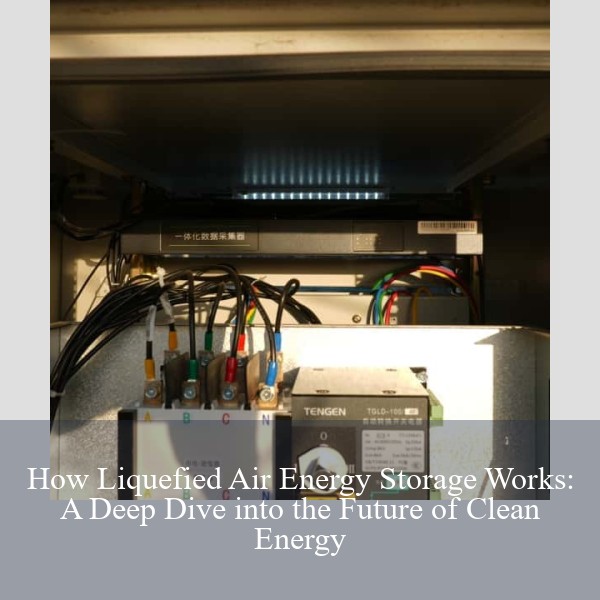Munich Solar Technology
The Basic Working Principle of Pumped Storage: A Deep Dive for Energy Enthusiasts
What Is Pumped Storage and Why Should You Care?
Ever wondered how we store electricity like we stockpile canned beans for a rainy day? Enter pumped storage hydropower – the unsung hero of energy grids. Think of it as a giant water battery that literally moves mountains (or at least water between them). In this article, we'll unpack the basic working principle of pumped storage, its real-world applications, and why it's suddenly trending in renewable energy circles.
How It Works: The Elevator Pitch for Water
two reservoirs – one up high, one down low – playing an endless game of tag. Here's the play-by-play:
- Step 1: When electricity is cheap/plentiful (hello, midnight wind power!), water gets pumped uphill
- Step 2: The water waits patiently like kids before a rollercoaster drop
- Step 3: During peak demand (cue everyone turning on ACs simultaneously), water rushes down through turbines
- Step 4: Voilà! Potential energy becomes electricity
It's essentially energy arbitrage – buy low, sell high. Though instead of stocks, we're trading in H₂O.
Why Utilities Are Obsessed With This 100-Year-Old Tech
You might think pumped storage is as old-school as dial-up internet. But here's the kicker: modern grids need it more than ever. Let's break down its superpowers:
The Swiss Army Knife of Grid Management
- 80% efficiency: Better ROI than most Wall Street hedge funds
- 90-second ramp-up: Faster than your Uber Eats delivery
- 10+ hour storage: Outlasts your smartphone battery by... well, a lot
Case Study: Dinorwig Power Station's "Electric Mountain"
Nestled in Wales' Snowdonia National Park lies a James Bond villain-worthy facility. Dinorwig can go from 0 to 1.8GW in 16 seconds – enough to restart the UK grid if it crashes. Bonus points for being housed inside an actual mountain. Talk about workplace scenery!
The Numbers Don't Lie
- Global capacity: 160GW (enough to power 160 million hairdryers)
- US leader: Bath County Station (3GW capacity)
- China's new project: 3.6GW Fengning plant (stores 40 million bathtubs of water)
Not All Sunshine and Rainbows: Challenges Ahead
Let's not pretend it's perfect. Pumped storage has its quirks:
- Geography test: Needs specific elevation changes – not exactly portable
- Environmental speed bumps: Fish ≠ fans of turbine blades
- Capital intensive: Building costs make Elon Musk's Twitter purchase look thrifty
Innovation to the Rescue
The industry's fighting back with cool new tricks:
- Seawater systems: Japan's Okinawa plant uses ocean as lower reservoir
- Underground plants: Mine shafts getting second lives as storage sites
- Variable-speed pumps: Like cruise control for water flow efficiency
Pumped Storage 2.0: What's Next?
Hold onto your hard hats – the industry's brewing some mad scientist energy:
- Hybrid systems: Pairing with solar farms like peanut butter & jelly
- AI optimization: Machine learning predicting energy prices better than Wall Street quants
- Green hydrogen combo: Using excess energy to make H₂ – the ultimate backup plan
Fun fact: Scotland's testing a project where wind turbines directly power pumps – cutting out the middleman (aka the power grid). It's like having a self-charging water battery attached to each turbine. Genius or crazy? Maybe both!
The Bottom Line (Without Actually Saying "In Conclusion")
Next time you turn on a light, remember there's a 50% chance it was powered by water that's been on a literal rollercoaster ride. As renewable energy grows, pumped storage is becoming the grid's favorite party planner – storing the good times (energy) and releasing them when the party (demand) peaks. Now if only they could make it power our coffee makers too...
- Pre: Bloemfontein Energy Storage Scenario Analysis: Powering South Africa’s Future
- Next: Air Energy Storage Strength: Powering the Future with Compressed Innovation
Related Contents

How Liquefied Air Energy Storage Works: A Deep Dive into the Future of Clean Energy
If you’re here, you’re probably part of the growing tribe of renewable energy enthusiasts, engineers, or policymakers looking for scalable energy storage solutions. Maybe you’ve heard terms like “liquid air energy storage” (LAES) tossed around at conferences but wondered, “How does this actually work—and is it better than lithium-ion batteries?” Let’s crack this open.
